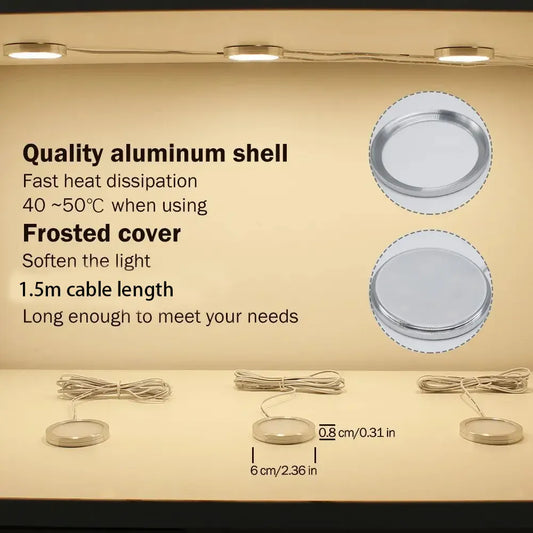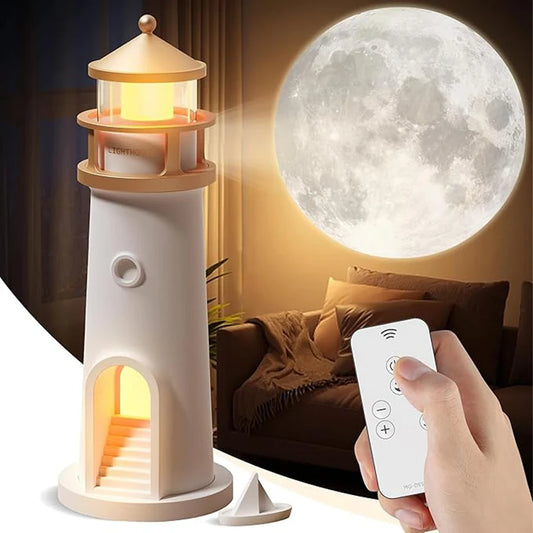
5 Pro Tips for Battery Operated Wall Lights: Enhance Your Home Décor & Functionality
Share
Table of Contents
- Tip 1: Maximize Battery Life with Smart Usage and Maintenance
- Tip 2: Install Wireless Wall Lights in High-Traffic Areas for Maximum Convenience
- Tip 3: Use Motion-Sensor Wall Lights for Smart Lighting Control
- Tip 4: Integrate Remote Control Systems for Easy Customization of Lighting Modes
- Tip 5: Optimize Placement to Enhance Both Functionality and Aesthetic Appeal
- Conclusion
- FAQs About Battery Operated Wall Lights
Battery-operated wall lights are a fantastic addition to any home, offering flexibility, ease of installation, and energy efficiency. Whether you're upgrading your living room, adding lighting to dark hallways, or creating ambiance in your bedroom, these lights can be the perfect solution. However, to truly get the most out of them, you need to understand a few key tips that professionals swear by.
Here are five pro tips that will help you enhance the functionality and aesthetic appeal of battery-powered wall lights in your home.
Tip 1: Maximize Battery Life with Smart Usage and Maintenance
To get the most out of your battery-operated wall lights, focus on smart usage and maintenance. First, always use high-quality batteries like lithium or alkaline, which last longer and perform better than cheaper options. Additionally, make use of timers or motion sensors to automatically control when the light turns on and off. This ensures your lights aren’t on longer than necessary, conserving battery power. Installing lights in lower-traffic areas or in spaces that don’t need constant illumination will also reduce battery consumption.
Regular cleaning of your lights, including the sensors and lenses, helps maintain their efficiency, while adjusting brightness and using dimming features further reduces power usage. By combining these strategies, you can extend your battery life by up to 50% or more, making your battery-operated wall lights last much longer.
Key Tips to Maximize Battery Life:
| Tip | Description |
|---|---|
| Use High-Quality Batteries | Opt for lithium or alkaline batteries to ensure longer-lasting performance. |
| Leverage Timers & Motion Sensors | Use timers or motion sensors to control when the light turns on and off, saving battery. |
| Optimize Placement | Place lights in areas where they won’t be used constantly, reducing unnecessary power consumption. |
| Keep Lights Clean | Regularly clean lights to maintain sensor accuracy and prevent excessive energy use. |
| Use Dimming Features | Adjust brightness to lower levels when full brightness isn’t needed to save battery. |
Tip 2: Install Wireless Wall Lights in High-Traffic Areas for Maximum Convenience
One of the main advantages of battery-operated wall lights is that they are wireless, meaning you can install them virtually anywhere without the hassle of wiring. However, for maximum convenience and effectiveness, it’s best to place them in high-traffic areas where you need light but don’t want to deal with cumbersome cords or complicated installations.
Ideal Locations for Wireless Wall Lights:
- Entryways: Wireless wall lights are perfect for illuminating dark entryways without needing to drill holes for permanent lighting.
- Hallways: A great solution for long corridors that lack enough electrical outlets.
- Kitchens: Mount them under cabinets or along counters for extra task lighting.
Pro Tip: In spaces like these, choose lights with long-range sensors or wider light coverage to ensure that every corner gets illuminated effectively.
Tip 3: Use Motion-Sensor Wall Lights for Smart Lighting Control
Motion-sensor lights aren’t just convenient; they’re also a great way to save energy. They automatically turn on when movement is detected, ensuring your lights are only on when you need them.
Benefits of Motion-Sensor Wall Lights:
- Energy Savings: They reduce energy waste by ensuring the lights only turn on when needed.
- Convenience: Perfect for areas like bathrooms, hallways, and staircases, where you might not want to fumble for a light switch in the dark.
- Security: Motion sensors can also act as a deterrent to burglars, as they turn on when movement is detected around your home.
For example, a motion-sensor wall light in a dark hallway will only turn on when you walk by, preventing the need to leave the light on all the time. This increases battery life while still providing ample lighting when necessary.
Tip 4: Integrate Remote Control Systems for Easy Customization of Lighting Modes
While motion sensors are excellent for some areas, remote control systems allow for easy customization and more control over your lighting. Many battery-operated wall lights now come with the option to integrate a remote control for adjusting brightness, color temperature, and even lighting modes.
Why Use Remote Control Systems?
- Custom Lighting: You can set the mood with different brightness levels or color temperatures. Whether you want a warm, cozy atmosphere or a bright, vibrant setting, the remote lets you control it all.
- Convenience: No need to get up and adjust the light manually. Simply press a button from anywhere in the room.
Most remote-controlled battery-operated wall lights are compatible with a wide range of mounting locations, from kitchen counters to living room walls, and even outdoor patios.
| Feature | Traditional Wall Lights | Battery-Operated Remote-Control Wall Lights |
|---|---|---|
| Control Method | Manual switches | Remote control, sometimes via app |
| Customization | Limited | Brightness and color temperature adjustment |
| Installation | Requires wiring | Easy installation, no wires required |
Remote control systems make these lights more flexible, perfect for when you want to change things up depending on the time of day or activity.
Tip 5: Optimize Placement to Enhance Both Functionality and Aesthetic Appeal
Lastly, placement is key to ensuring that your battery-operated wall lights serve both a functional and aesthetic purpose. The beauty of battery-powered lights is that you’re not restricted by the need for outlets or wires, so you can be more creative with your placements.
Placement Ideas:
- Accent Walls: Mount wall lights above or beside artwork or photo frames to highlight your favorite pieces.
- Behind Furniture: Place lights behind sofas or shelves for a backlight effect that adds warmth to a room.
- Near Mirrors: Wall lights near mirrors not only enhance visibility but also create a stylish ambiance.
When deciding on placement, always consider both functionality (e.g., illumination needs) and aesthetics (e.g., how the light complements the overall design). A well-placed light can act as both a practical fixture and a stunning piece of décor.
Conclusion
Battery-operated wall lights are incredibly versatile and practical, but to truly get the most out of them, it’s important to follow a few expert tips. From maximizing battery life with energy-efficient bulbs to using motion sensors for smart control, these five tips will help you enhance both the functionality and aesthetic appeal of your lighting setup.
By integrating these pro tips into your home lighting plan, you’ll not only save time and energy but also create a more personalized and visually appealing space.
FAQs About Battery Operated Wall Lights
1. How long do battery-operated wall lights last?
Battery-operated wall lights typically last anywhere from 6 months to 2 years depending on usage, the type of bulb used, and the battery capacity. Using energy-efficient LED bulbs can significantly extend battery life.
2. Can I use any battery for my wall light?
It’s important to use the correct battery type recommended by the manufacturer. Most wall lights use AA or AAA batteries, but some might require rechargeable battery packs for longer-lasting power.
3. Are motion-sensor wall lights reliable?
Yes, motion-sensor wall lights are highly reliable and can detect movement within a specific range. However, the effectiveness depends on sensor placement and the environment (e.g., lighting, obstructions).
4. How do I install battery-operated wall lights?
Installation is typically very simple and doesn’t require any wiring. Most lights come with adhesive pads or screws to mount them to your wall.
5. Can I use battery-operated wall lights outdoors?
Yes, there are outdoor-rated battery-operated wall lights available. Be sure to choose weather-resistant models for outdoor use.
6. Do battery-operated wall lights require frequent maintenance?
While they don’t require much maintenance, you will need to change the batteries periodically and clean the lights to maintain optimal performance.
Further Reading:




























 />
/>
 />
/>
 />
/>
 />
/>
 />
/>